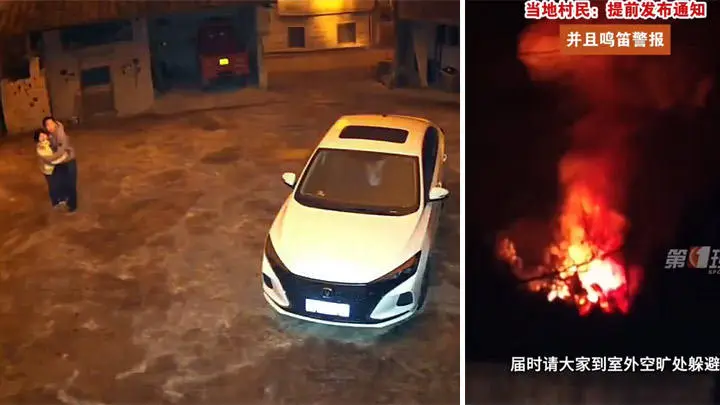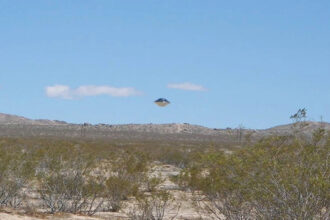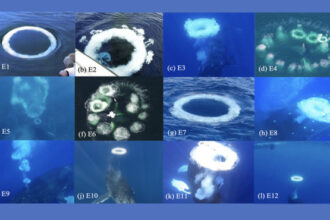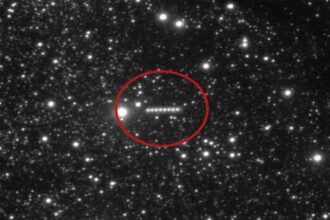China successfully launched a classified satellite on Thursday (January 23), but a booster used in the mission unexpectedly fell near a family home.
The TJS-14 satellite was launched aboard a Long March 3B rocket from the Xichang Satellite Launch Center on Thursday at 10:32 a.m. EST (3:32 p.m. GMT; 11:32 p.m. local time). The satellite is now safely on its way to geostationary orbit, but one of the rocket’s four side boosters crashed to Earth in a densely populated area in Zhenyuan County, Guizhou Province.
Security camera footage posted on the social media platform Sina Weibo captured the moment when two family members reacted to an explosion nearby that lit up the night sky. Fortunately, the booster, which exploded on impact, fell in what appeared to be hills above the house. In one of the videos, two witnesses can be seen panicking and embracing each other in fear as they watch the fall.
A terrifying moment the Long March 3B segment dropped super close to a residential building https://t.co/sn3MHKiMFY pic.twitter.com/GWdcRt56qC
— China 'N Asia Spaceflight 🚀𝕏 🛰️ (@CNSpaceflight) January 24, 2025The Long March 3B is regularly launched from Xichang, a spaceport established inland during the Cold War for security reasons. This location results in the rocket’s early stages falling on land, unlike most nations that launch rockets from coastal areas, allowing stages to fall into oceans.
The Long March 3B is one of China’s oldest and most reliable workhorse rockets. It uses a toxic hypergolic propellant mixture of hydrazine and nitrogen tetroxide. The rocket’s first stage is accompanied by four 7.4-foot-wide (2.25-meter) boosters, which often contain residual propellant. This residual fuel causes the stages to explode upon impact, while the remaining fuel and oxidizer can pose risks to both people and animals.
China’s space authorities implement some safety measures before each launch, including calculating and evacuating drop zones, also referred to as launch corridors. Affected areas are given warnings and advised to avoid approaching debris. However, despite these protocols and ongoing tests with parachutes and grid fins to better control landing zones, accidents and near-misses still occur.
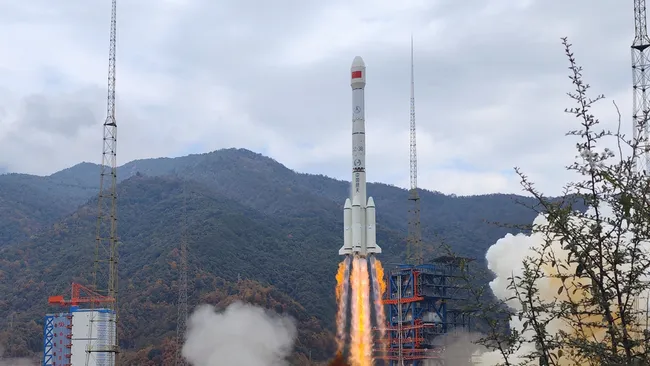
To reduce risks, China has constructed new launch centers on Hainan Island and developed offshore launch platforms near the coast of Shandong Province. However, the continued use of its inland bases means incidents like this may still occur.
Thursday’s launch marks the sixth of approximately 100 planned by China through 2025. Among these, the Long March 3B is expected to remain operational for critical missions, such as the Tianwen 2 asteroid sample-return mission. Meanwhile, calls to prioritize safety in space launches are growing both within and outside of the Asian giant.
The current protocol is obviously not enough to ensure people's safety. Changes must be made but not on the horizon. There's even talks in the government to expand Xichang to a commercial space port. pic.twitter.com/E1hQwuPA9k
— China 'N Asia Spaceflight 🚀𝕏 🛰️ (@CNSpaceflight) January 24, 2025



